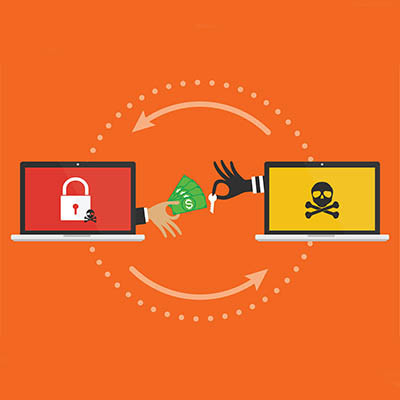Telesys Voice and Data Blog
Ransomware Is Tricky, So Strategize Against It
What if I told you that 92 percent of all organizations that are hit by a ransomware attack and agree to settle with the scammers, don’t ever see their data again? You’d probably say that you would never, ever pay and those that do, don’t make sense. Most people keep that stance until their choices are to pay for the data in the hopes of getting it back, or lose it completely. Let’s unpack ransomware and the strategy that hackers most utilize to deploy it: Phishing.
How Ransomware Works
Imagine for a second the surprise you would have if you tried to log into your computer and you were presented with a message telling you that your files have been encrypted and that you need to pay a sum in Bitcoin before the clock runs out or you will lose those files forever. Then you noticed the clock ticking down. Would you panic? You probably would.
That is ransomware, an ugly malware that could cost your business more than just money.
How Phishing Works
Phishing attacks appear to be legitimate emails that come in from legitimate sources, such as your bank, your vendors, or even from within your own company. These emails try to trick the user into clicking a link or downloading an attachment. They tend to use extreme levels of urgency to get the user to do so without thinking first. The truth is, most professional organizations that you depend on will never want you using email to do anything other than verify your identity. That means that the emails you get that say you have to act now to avoid going to jail for owing money could be as fraudulent as they seem.
These are phishing messages. They can come in through email, social media, or via SMS or phone call. Unfortunately for the modern user, they are constant, often sophisticated, and can be especially problematic if handled improperly.
Phishing + Ransomware = Major Trouble
Since many of today’s hackers can’t just hack their way into an account, they use social engineering tactics to do so. If they are able to expose their fraudulent message to someone that is less than vigilant, they may gain access to a computer (or worse yet, a computing network), and then deploy their ransomware payload. Not a good situation for any individual; and, a major problem for any business. This is why it is essential that your staff understands phishing tactics and can spot fraudulent emails and messages when they come in. Let’s take a look at some telltale signs that you are dealing with a phishing message.
Identifying Phishing
Phishing tactics are a lot more sophisticated than they were even a few short years ago, but they can’t do anything for the one variable that matters: legitimacy. Here are a few ways you can tell that you are dealing with a phishing attack.
- The details in the message are suspect - Many people don’t pay much attention to the email address an email is sent from, or if a word here or there is misspelled. This is how phishing attacks get you. If you receive a message that has spelling or grammatical errors that you wouldn’t find in professional correspondence, you probably are dealing with a scam. You can also look at the email address itself or best yet, mouse over any links found in the text of the email. If it seems fishy, it’s probably phishing. Don’t click on it.
- The tone is desperate - One telltale sign that you are dealing with a phishing attack is that the message written to you seems urgent. No reputable financial institution or government entity is going to demand immediate action from an email.
- There’s a link or an attachment - Using phishing to deploy ransomware (or any kind of malware), you will typically see an attachment or be asked to follow links in the message. If you have any question of the validity of the message, don’t click on a link or open an attachment.
Cybersecurity is a constant process. If you would like help getting your staff trained or if you would like some information about other security tools you can use to keep your infrastructure and data safe, call the IT professionals at Telesys Voice and Data today at (800) 588-4430.
About the author
Telesys Voice and Data has been serving the Dallas/Fort Worth area since 1994, providing IT Support such as technical helpdesk support, computer support, and consulting to small and medium-sized businesses.
Mobile? Grab this Article!
Tag Cloud


Comments